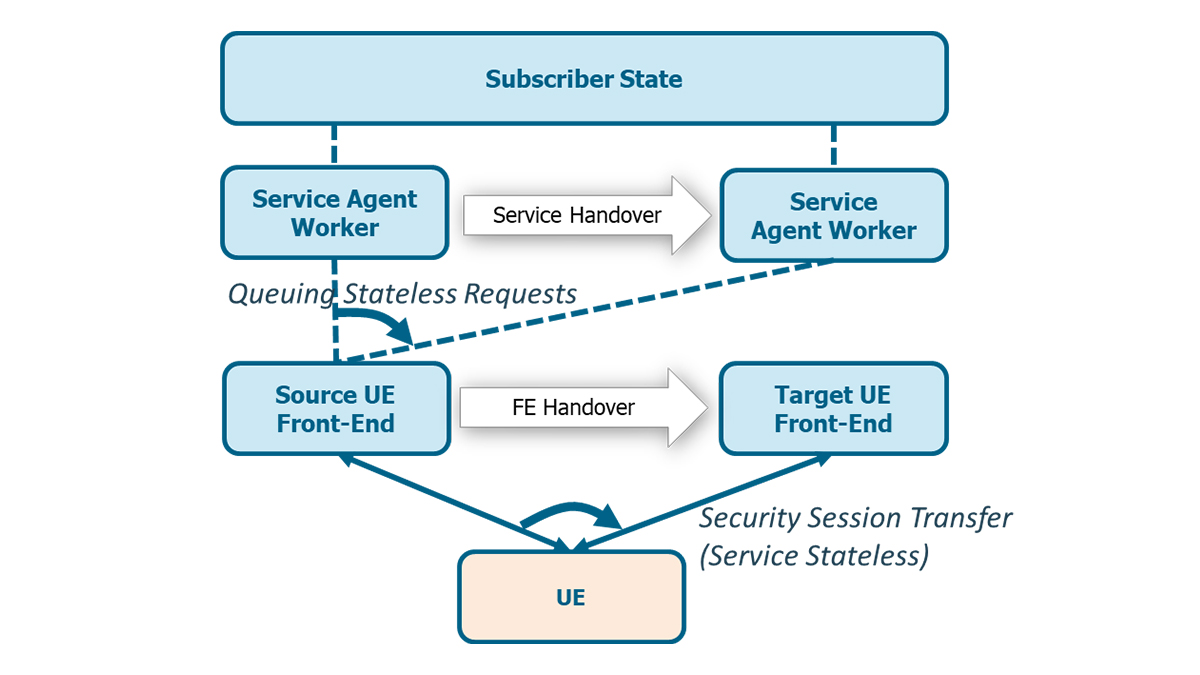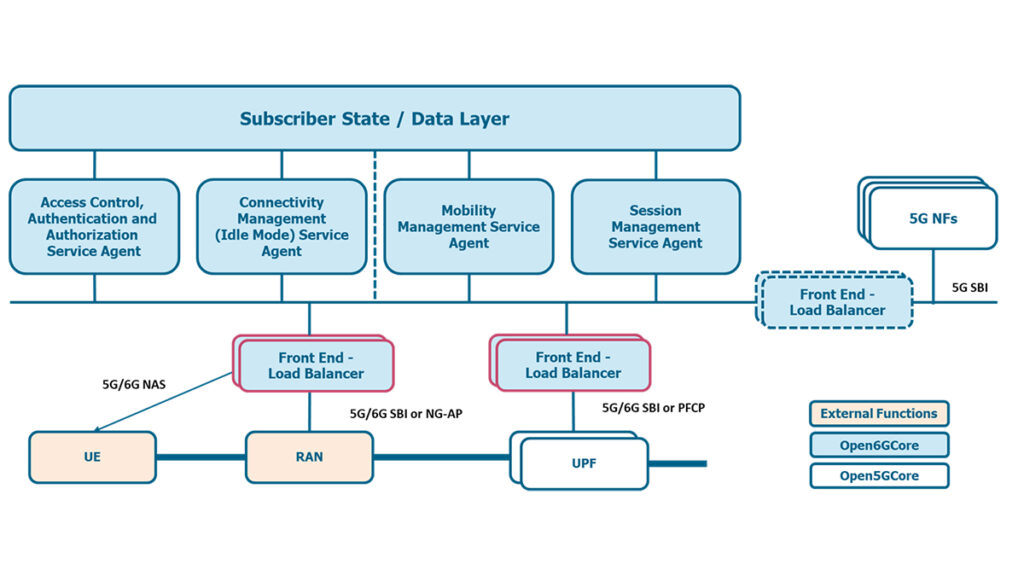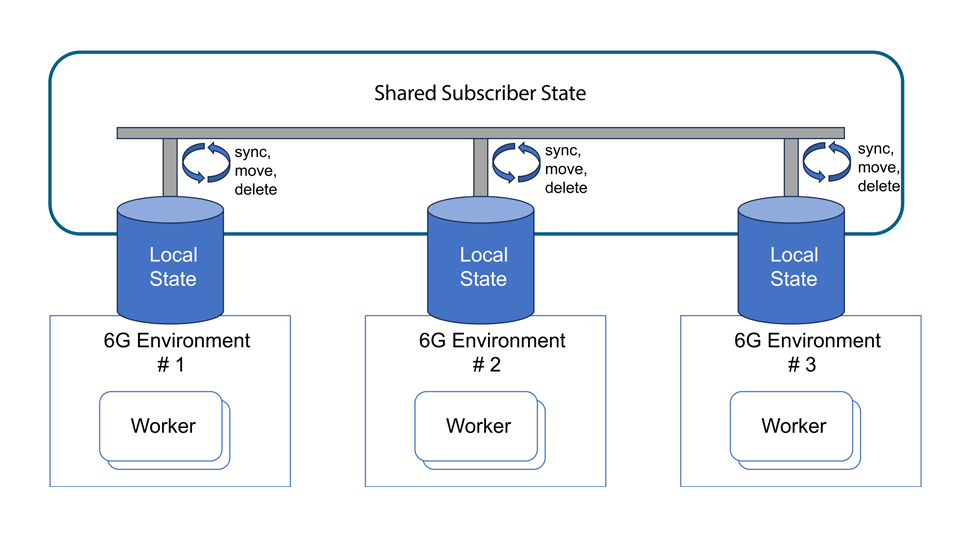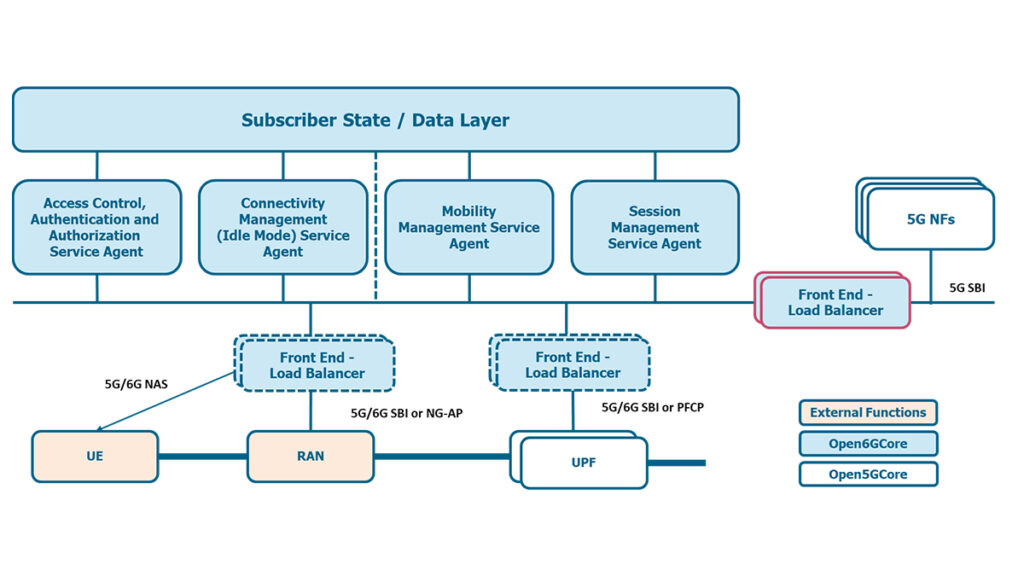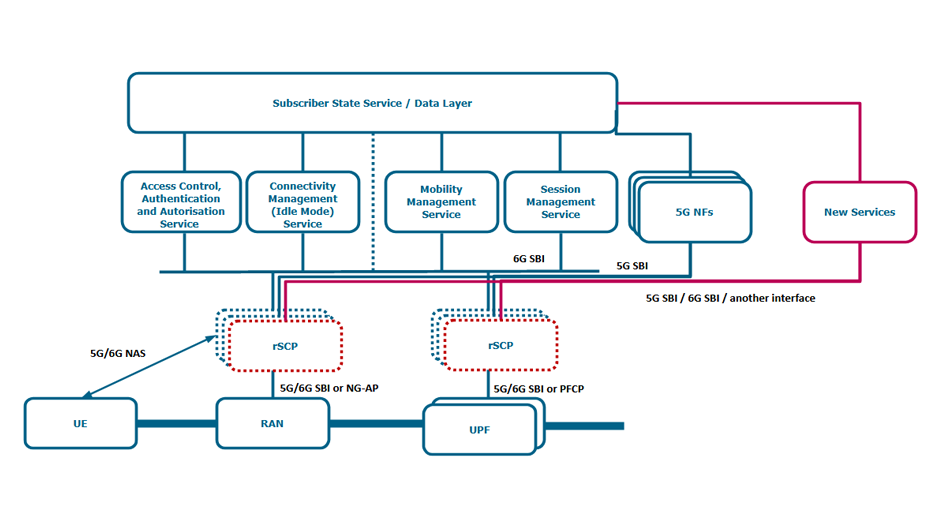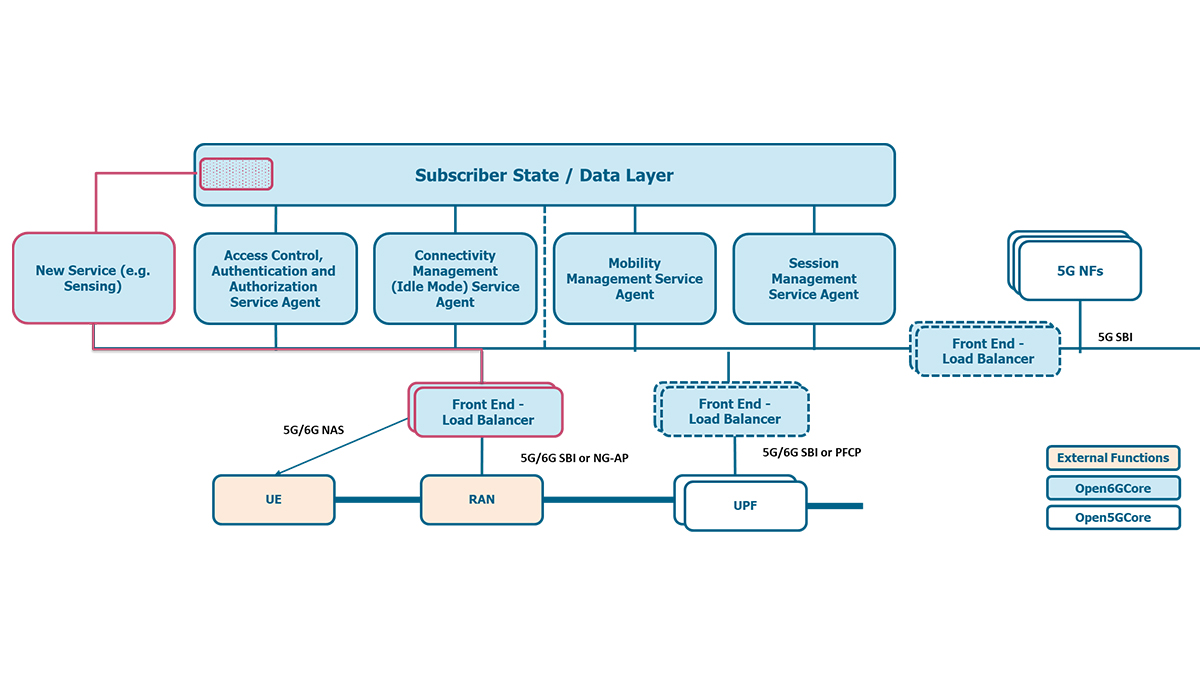Ultra Flexible Control Plane
An ultra-flexible control plane in software refers to a highly adaptable and programmable layer within a network or cloud environment. We keep the control- and data plane split to preserve the decoupling of both domains and therefore, increase the flexibility and programmability of both areas.
Each control plane environment provides its own Front-End and therefore access to the local processing environment. Service Worker builds the processing entities of each domain and provides service implementations for internal and external service users. This concept is backed up by a single subscriber state, which builds the backbone of the Open6GCore. Due to the single Subscriber State workers are state-less and therefore can be subject to scaling mechanisms.
This design choice improves, influences, and provides the foundation for key-aspects like:
- Performance
- Load balancing
- Easy scaling
- Reliability
- Stateless hot-standby with fast transfer
- Security
- Dynamic deployments
- Migrating users to new locations
- Continuous software updates and upgrades
In summary, an ultra-flexible control plane represents a sophisticated approach to managing and orchestrating network and cloud resources, offering enhanced programmability, scalability, security, and cost-efficiency amongst the other highlighted aspects.
Integration with 5G UE, RAN and data plane
(Backwards Compatibility with 5G Equipment)
Open6GCore is a core network implementation that looks ahead of time. We implement a core network concept that rethinks the structure of a core network and builds upon software development best practices. Thus, improving the design of a core network from the basis and highlighting the potential.
To prove that this concept works, we built support for 5G UE, RAN and UPF (data plane). We can show that this concept of a core network can support 5G equipment and at the same time we can point to areas of improvement for 6G equipment and interfaces.
State Store (ultra fluidity)
Ultra-fluidity in software design refers to creating interfaces and interactions that feel natural, intuitive, and responsive, like the fluid movements observed in the physical world. This concept emphasizes the importance of designing software in a way that mimics the ease of real-world actions, enhancing user experience by making digital interactions feel more organic and less forced. We apply the same concept to our understanding of the state store.
The State Store provides a shared state for all different functional parts of the core network. This shared state is utilized by the worker services. By creating an ultra-fluid state store, we provide a data back-end that can support fast changing environments and user mobility scenarios. Therefore, the systems need to allocate, drop and move user and system information constantly.
Depending on the deployment scenario, there can be a single state instance that renders any further logic obsolete, because only a single location of the state is defined. This story changes if the core network is deployed in a distributed fashion serving multiple system edge environments. The ability to organize the state in a way that it is available in proximity to the consumer and editor of state information, is paramount. Thus, a state organization system is needed to operate on the stored information. Further, predictions and intents can be utilized to steer the allocation of state according to the needs. All these aspects are considered during the design of the state store.
Integration with 5G SBA
Our Open6GCore utilizes the concept of rSCPs (reduced Service Communication Proxies) to being able to interface the inner communication system of Open6GCore (6G SBI) with Network Functions that support 5G SBI. Therefore, no modification is needed on the 5G NF side.
Commonly we expect all processing to be done inside of the Open6GCore. If some procedures, or parts of procedures are noted as external, the internal procedure will be divided, so parts of the complete procedure can be handled by an external 5G NF.
Ultra-high capacity data plane
The Open6GCore data plane reuses the Open5GCore UPF, ensuring it retains all advanced features developed in the last 10 years. For enabling ultra-high-capacity demands, the UPF is enhanced with an eBPF-based extension utilizing XDP (eXpress Data Path) to significantly boost data plane performance. XDP is a high-performance networking feature of the Linux kernel that accelerates packets processing by bypassing some of the kernels’ network processing.
This allows for rapid handling and manipulation of data traffic, making operations like adding and removing GTP-U headers exceptionally fast. Throughput tests with this setup have demonstrated capabilities reaching up to 90 Gbps or 4 Mpps on a single UPF.
Easy Integration of new services
Open6GCore is designed with extensibility in mind. Thus, new services can be added to the system using the previously identified interfaces. A new service can directly integrate with 6G SBI to have a native integration with Open6GCore.
Services can be integrated using 5G SBI via rSCPs, thus reusing the nominal interface of 5G NFs. Naturally, the system can be further extended with other interfaces. The internal 6G SBI and 5G SBI via rSCPs provide good examples of that practice.
Ultra fitting to use case needs
The implementation of Open6GCore provides a highly adaptable software foundation. Following software design best-practices and our knowledge gained when implementing Open5GCore, we built a core network that is highly adaptable for use case needs. Open6GCore is designed lean enough so it can be operated on low performance cots hardware.
Utilizing operational deployment techniques the system can be scaled-up to support higher numbers of users. Thus, our core network can be tailored from a system-load perspective. Another dimension of adaptability is that we can include only the necessary procedure implementations in the worker and therefore, provide an operational system that is tailored to the use case and the potential to scale the system up is maintained.

